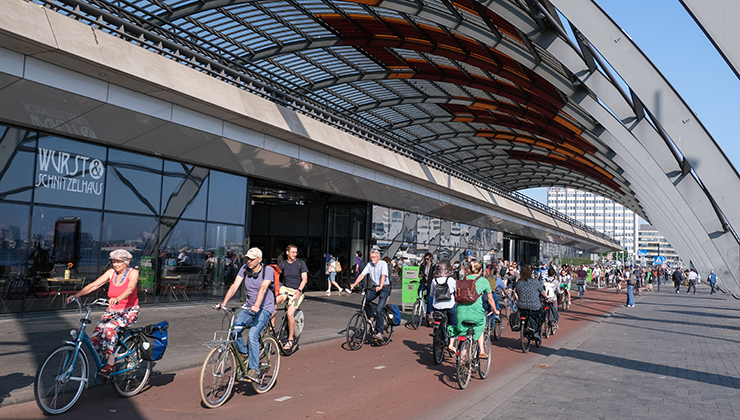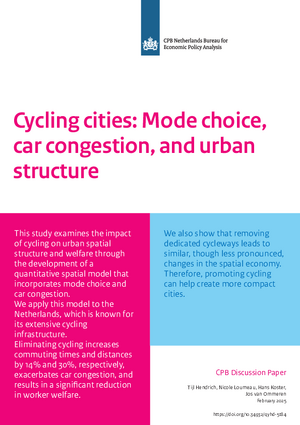February 11, 2025
DOI: 10.34932/qyhd-5t84
Cycling cities: Mode choice, car congestion, and urban structure
This study examines the impact of cycling on urban spatial structure and welfare through the development of a quantitative spatial model that incorporates mode choice and car congestion. We apply this model to the Netherlands, which is known for its extensive cycling infrastructure. Eliminating cycling increases commuting times and distances by 14% and 30%, respectively, exacerbates car congestion, and results in a significant reduction in worker welfare.

We also show that removing dedicated cycleways leads to similar, though less pronounced, changes in the spatial economy. Therefore, promoting cycling can help create more compact cities.
Downloads
English, Pdf, 2.8 MB
Pdf, 870.1 KB
Authors


Hans Koster VU
Jos van Ommeren VU
